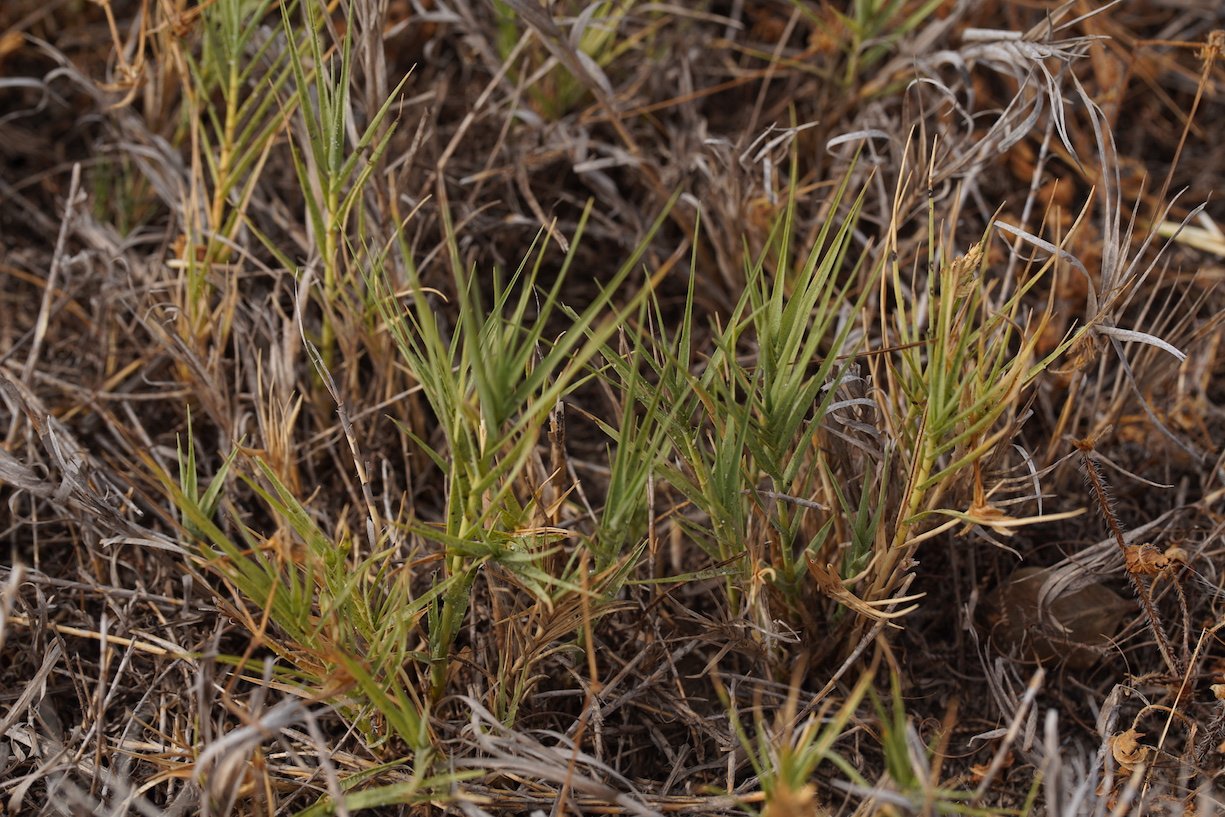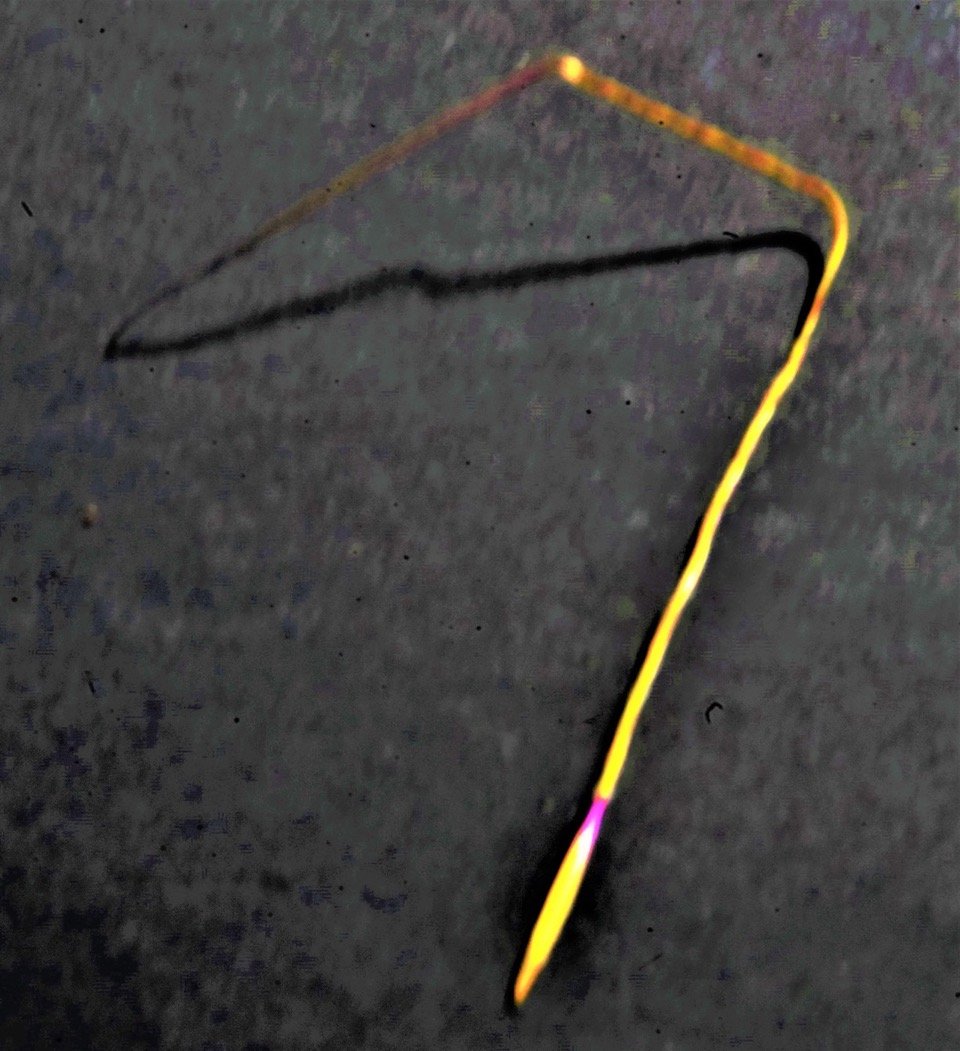Identifying Common Grasses During a Drought
Les Braund
Everyone recognizes grasses, but few of us can identify even the most common of grasses. Grasses are important in everyday life. Of all the plants on earth grasses are the most useful to humankind. Grasses include corn, barley, wheat, and rye.
Grasses are well represented in the canyon. There are native and non-native species. Among the more common native species are those from the Stipa, Leymus, and Festuca genera. Among non-natives are some highly invasive species like Arundo donax (Giant reed), Cortaderia ssp.(Pampas grasses), Cyondon (Bermuda grass) and Bromes. These invasive grasses now dominate the grasslands in the canyon.
In spite of the drought there are some grasses that can be easily identified, both native and non-native at this time of the year
Salt grass (Distichlis spicata) is common and readily identifiable because it remains green most of the year. Although this grass is quite small it is easily seen. It seldom grows taller than 6 inches. It has rhizomes (above ground root-like structures connecting related plants) that become somewhat yellow during the dry season. Distichlis likes alkaline soil, which we have in abundance in the canyon. This grass can be found in full sun through the canyon. Salt grass acquired its name from the salt that accumulates on the leaves. Local Indians used this grass as a source of salt for seasoning food. They would burn the grass and collect the ashes to season their food. Salt grass is native.
Purple needle grass (Stipa pulchra) was once the most common grass in California. It is called purple needle grass because the seed is purple. Purple needle grass is frequently found in small patches throughout the canyon. It can be recognized by its tall stems, about 30 inches tall. The stems are light tan look kind of wispy swaying in the wind.
If you can find seeds look for the long awns. The seed and the awn can be three inches long. The awns are long thin extensions of the seed. At 2.5 inches long, the awn comprises the major part of the seed and awn. The awn is necessary for identification. The awn typically has two distinct bends that are the positive for proper identification. Indians used the grass to make baskets and flour. Stipa pulchra is the official state grass of California.
Deer grass (Muhlenbergia rigens) is found in large bunches in damp areas. The bunches can be a foot or more in diameter. The stems can be up to 30 inches tall and are sometimes called spikes due to their long linear stems. The bunches are sometimes referred to as caespitose. It is often used as an ornamental in local landscapes. Indians used the grass to make baskets. This grass is a native.
There are two invasive bromes that dominate in the canyon. The first is Bromus diandrus or rip gut brome. The other is red brome or Bromus madritensis subsp rubens. Everyone should be familiar with both of these grasses. If you have ever gotten stickers in your socks or in the paws of your dog requiring a trip to the vet you have been introduced to this pesky grass. Bromus diandrus grass has been known to kill cattle.
The seed heads set atop the stems are said to be nodding. The florets (seeds) of Bromus diandrus are long with sharp points. The florets are so problematic because the barbs on the lemma (outer sides of the seed) point in and prevent the seed from being pulled out.
Red brome (not shown) is smaller, the seed head is not nodding and the seeds have a distinct reddish color. The seed can produce similar annoying problems.
One of the more common non-native grasses are the oats. The canyon supports two species. The two species are Avena barbata and A.fatua. The first is commonly called slender wild oats and the latter just called wild oats. When the glumes remain on the stem they can be used to identify the two grasses. The glumes are the part of the seed that encapsulates the seed. If the glume is 3 to 4 millimeters wide it is A. barbata. If the glumes are wider than this, the grass is A.fatua. Both of the Avena's were used by local Indians to make flour.







